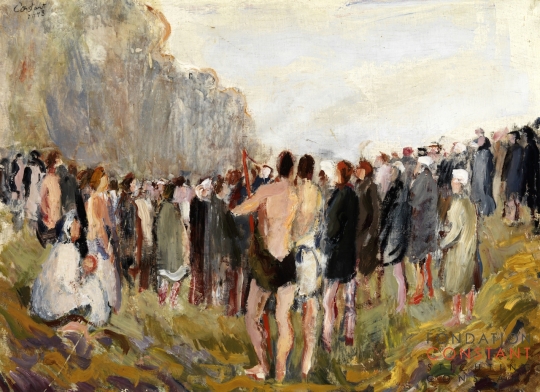Image

Photographer
Tom Haartsen
On the back of the Self Portrait recto is another Self Portrait.
Circa 1940
In the documentary Constant, avant le départ, 2005, the work is shown to Constant. He remarks about the work: The design is weak but the colours are good.
Circa 1939.
In 1939/1940 Constant drew 8 illustrations for the poems Fleurs du Mal by Charles Baudelaire, 1857.
Both the drawings Le revenant (The Ghost) and Femmes damnées (Delphine et Hippolyte) are from Fleurs du Mal.
Circa 1939
In 1939/1940 Constant drew 8 illustrations for the poems Fleurs du Mal by Charles Baudelaire, 1857.
Both the drawings Le revenant (The Ghost) and Femmes damnées (Delphine et Hippolyte) are from Fleurs du Mal.